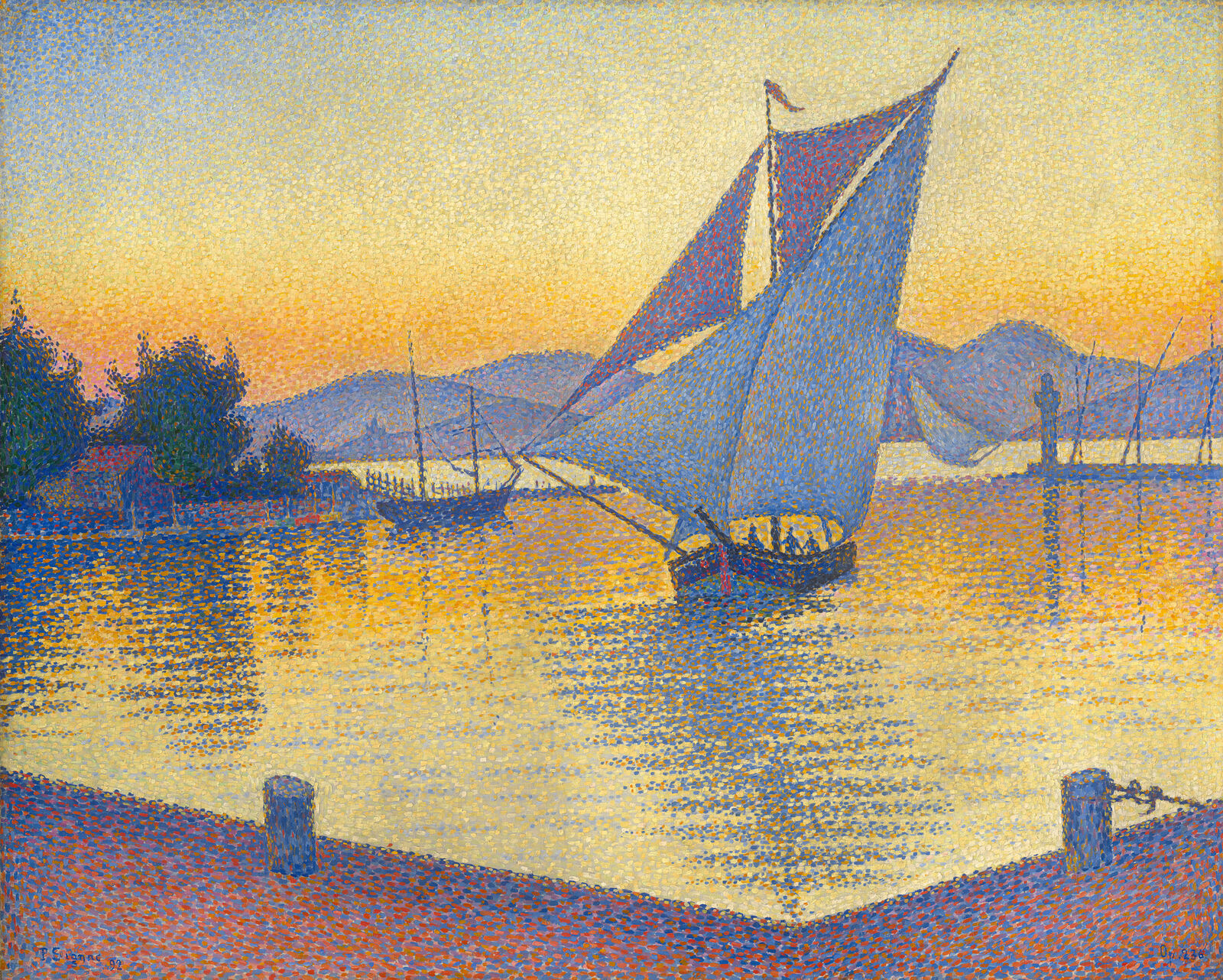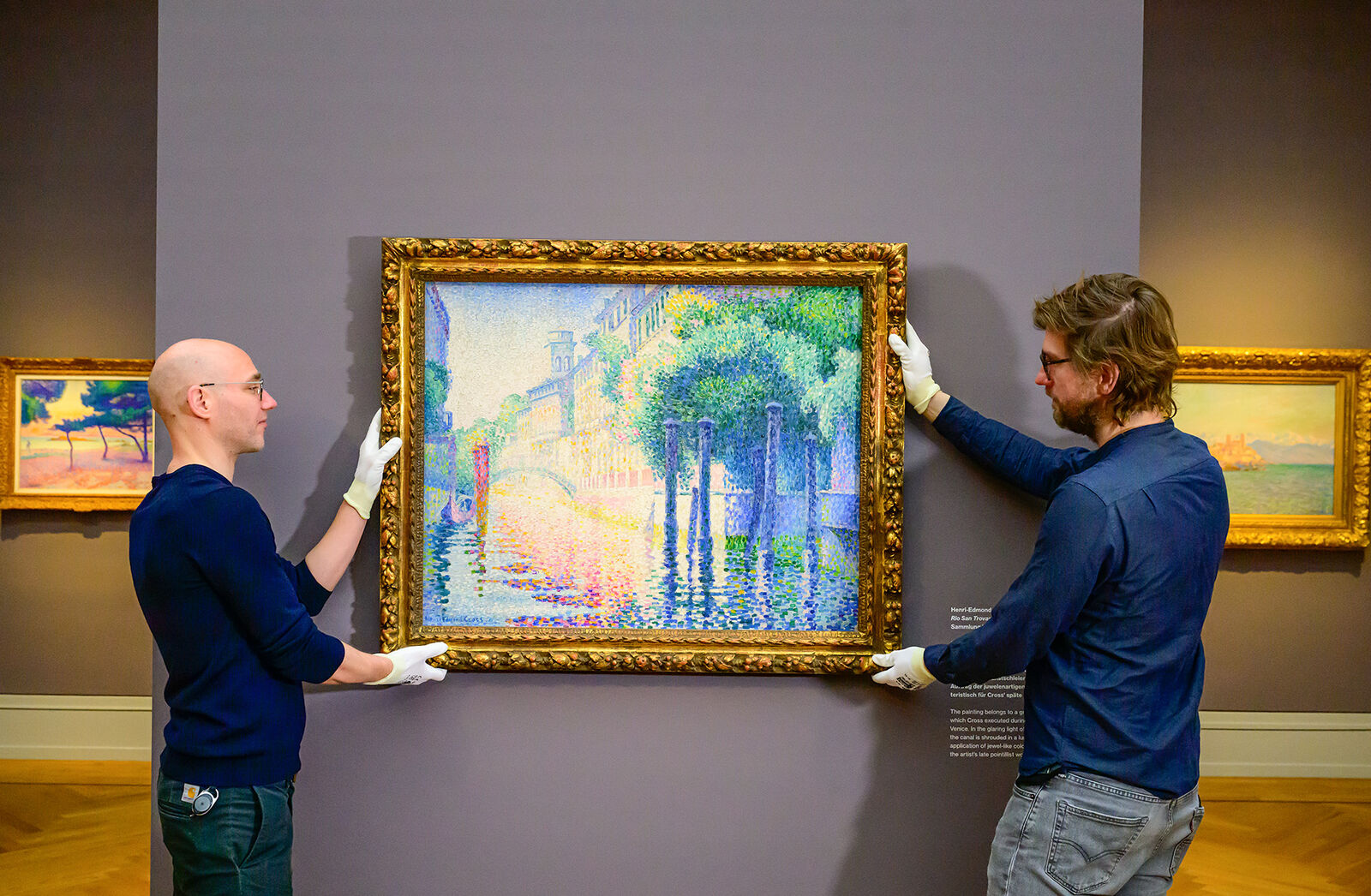
One of the four new works in the Hasso Plattner Collection: Rio San Trovaso, Venice by Henri-Edmond Cross
Caillebotte, Luce, Cross, Bonnard:
The new works of the collection
December 2022 – Since December 14, the collection of the Museum Barberini has been expanded to include four important new works. The paintings by Pierre Bonnard, Gustave Caillebotte, Henri-Edmond Cross, and Maximilien Luce were acquired by the Hasso Plattner Foundation in November 2022 and are now being made available to the Museum Barberini as permanent loans.
The painting Rio San Trovaso, Venice (1903–4) by Henri-Edmond Cross, whose work was featured in a solo exhibition at the Museum Barberini in 2018, will be permanently displayed starting December 15 in a room dedicated to the “Coasts of Europe,” where it will appear in dialogue with the Venice pictures of Claude Monet and other Pointillist works by Cross. From March 2023 on, the paintings by Bonnard, Caillebotte, and Luce will be successively integrated into the hanging of the collection in the course of an extensive new presentation. With these four recent acquisitions, the Hasso Plattner Collection now comprises 111 works of French Impressionism and Post-Impressionism.
“Following the Hasso Plattner Foundation’s acquisition earlier this year of four additional works by Claude Monet, we were overjoyed at these new purchases. The eight new paintings will be integrated into the thematic presentation of the collection over the coming year. I am especially delighted at the inclusion of two new artists, with the still life by Pierre Bonnard and the Paris painting by Maximilien Luce. The new presentation of the collection will also involve the creation of new rooms devoted to Fauvism as well as the serial paintings of Claude Monet. The grainstacks, Houses of Parliament, and water lily paintings will be presented together.”
The four new works in the collection
Gustave Caillebotte: Wild Garden at Le Petit Gennevilliers, ca. 1882–84
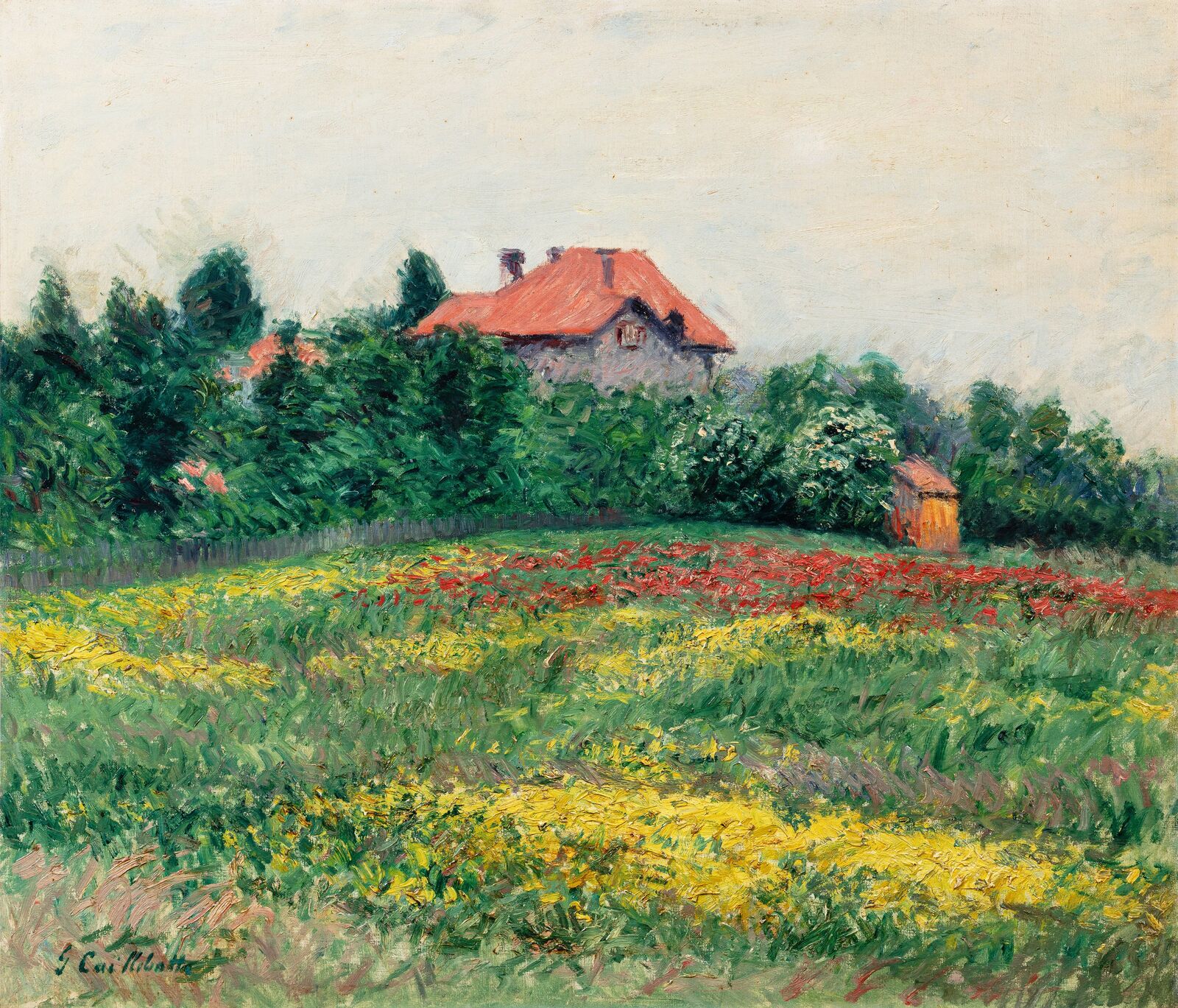
Gustave Caillebotte: Wild Garden at Le Petit Gennevilliers, ca 1882–84, Hasso Plattner Collection
Gustave Caillebotte, now represented with seven works in the Hasso Plattner Collection, painted Wild Garden at Le Petit Gennevilliers between 1882 and 1884, during a phase in which he increasingly focused on landscape painting. He found his motifs in the environs of his country house at Le Petit Gennevilliers, a village on the Seine near Paris.
The painting’s glowing color and free brushwork point to the influence of the garden pictures of Claude Monet, in whose company Caillebotte’s painting will be displayed in the Hasso Plattner Collection beginning in the spring of 2023. The work was previously held in various private collections and will be publicly exhibited for the first time at the Museum Barberini.
Maximilien Luce: The Seine at the Pont Saint-Michel, 1900
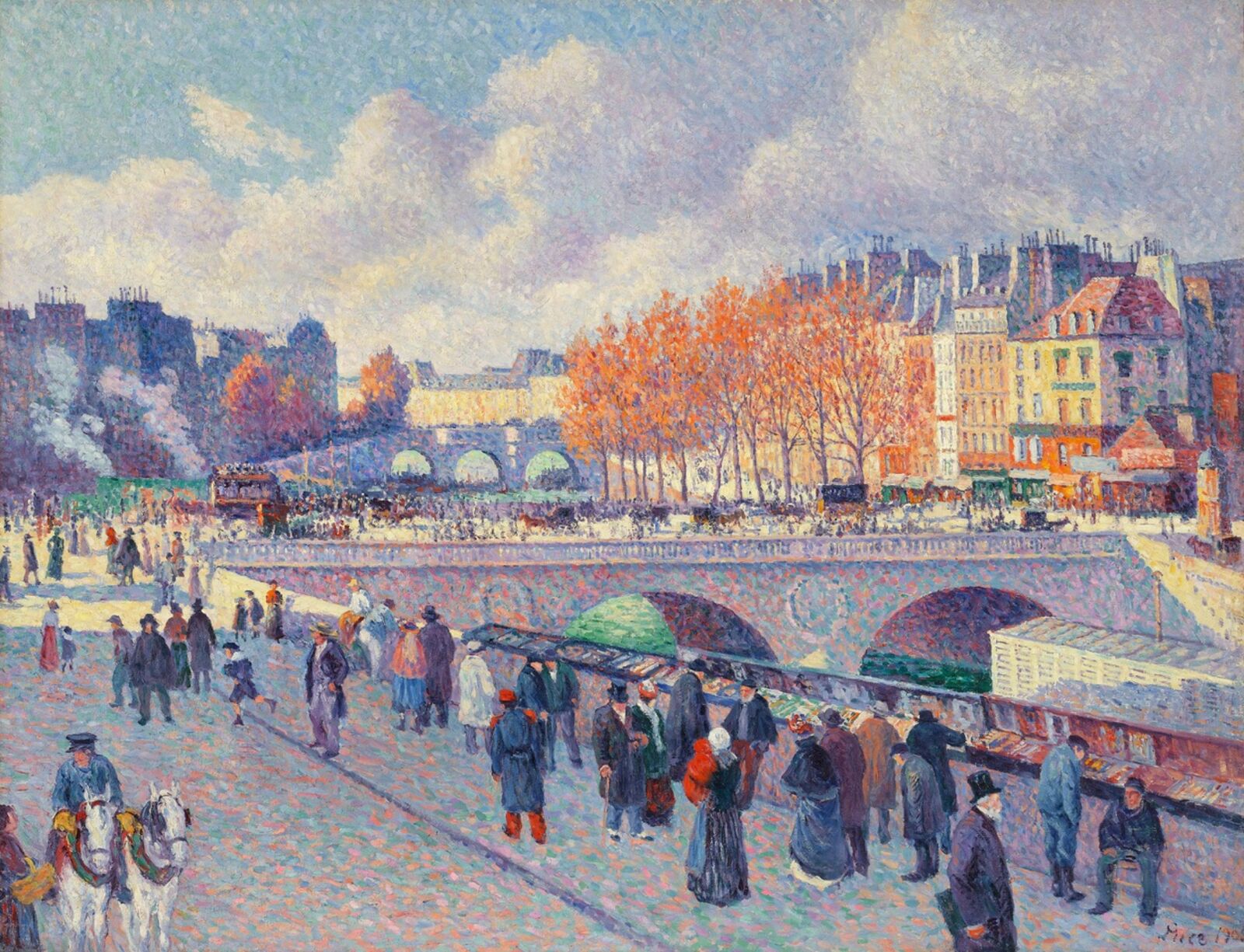
Maximilien Luce, The Seine at the Pont Saint-Michel, Hasso Plattner Collection
The painting The Seine at the Pont Saint-Michel by the Neo-Impressionist Maximilien Luce is the first work by the artist in the Hasso Plattner Collection. It was painted in 1900 along with three other views of the Pont Saint-Michel. In his images of the bustling metropolis, Luce echoed the Paris pictures of older colleagues like Gustave Caillebotte. The work combines the free brushwork of Impressionism with the mosaic structure of Pointillist painting.
In the future, Maximilien Luce’s cityscape will be presented in the Paris chapter of the collection, where it will offer a Pointillist counterpart to the boulevards and rooftops of Pissarro and Caillebotte.
Henri-Edmond Cross: Rio San Trovaso, Venice, 1903/04
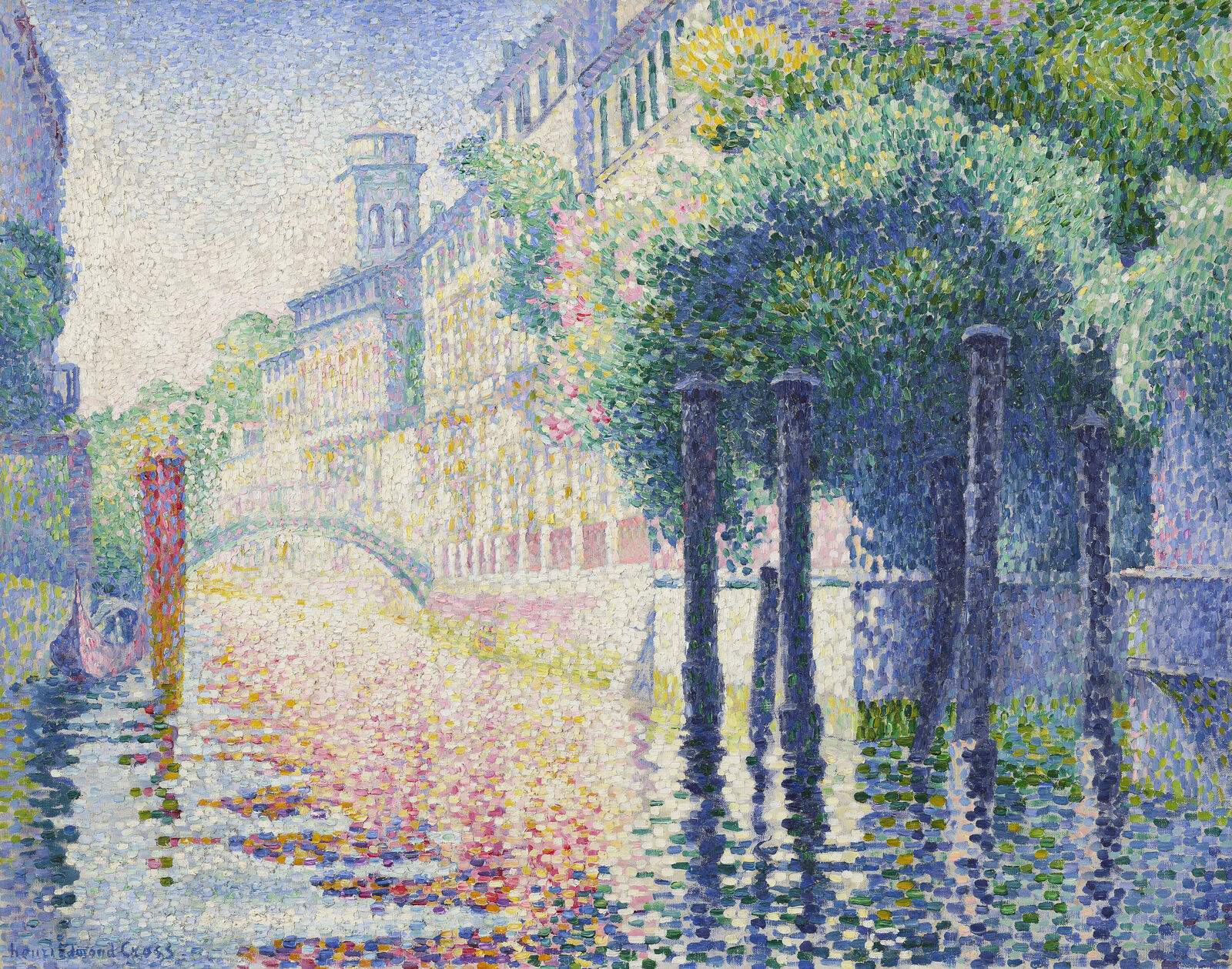
Henri-Edmond Cross: Rio San Trovaso, Venice, 1903/04, Hasso Plattner Collection, Museum Barberini
Rio San Trovaso, Venice by Henri-Edmond Cross, painted in 1903–4 during a stay by the artist in Venice, is the fourth work by Cross to enter the Hasso Plattner Collection. The Venetian canal is enveloped by a glowing veil of mist in the gleaming light of the midday sun. The impasto application of jewel-like colors is characteristic of the artist’s late Pointillist work.
In the early twentieth century, the picture belonged to a private collection in Germany and was shown at the pioneering exhibition of the Sonderbund in Cologne in 1912.
Pierre Bonnard: Still Life, 1939

Hasso Plattner Collection
Pierre Bonnard: Still Life, 1939
The Still Life by Pierre Bonnard from 1939 is the first work by the artist in the Hasso Plattner Collection. In his paintings, Bonnard—who once described himself as “the last of the Impressionists”—combined borrowings from Claude Monet with the intense colorism of the Fauves. The compressed perspective and tightly cropped composition give this late still life an enigmatic, dream-like quality.
From 1990 to 2022 the painting was on view as a permanent loan at the Museum of Modern Art in New York.









